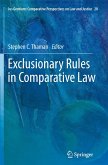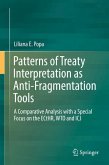Both the European and the Inter-American Courts of Human Rights are empowered to issue reparation judgments that are binding for the member states. Interestingly, though, while the European Court's reparation powers are limited by the principle of subsidiarity, the European human rights protection system provides a specific procedure to ensure execution of judgments. On the contrary, under the American Convention on Human Rights the Inter-American Court of Human Rights has broad reparation powers. This, however, does not correlate with a dedicated procedure to monitor execution under the inter-American human rights protection system. This gap has prompted the Inter- American Court to create, by way of interpretation of the American Convention, its own monitoring procedure.The author compares the reparation practice of both courts, shows their respective limitations and potential for development. He then critically evaluates the execution records under both human rights protectionsystems and proposes possible modifications with a view to improving the enforcement of judgments.








